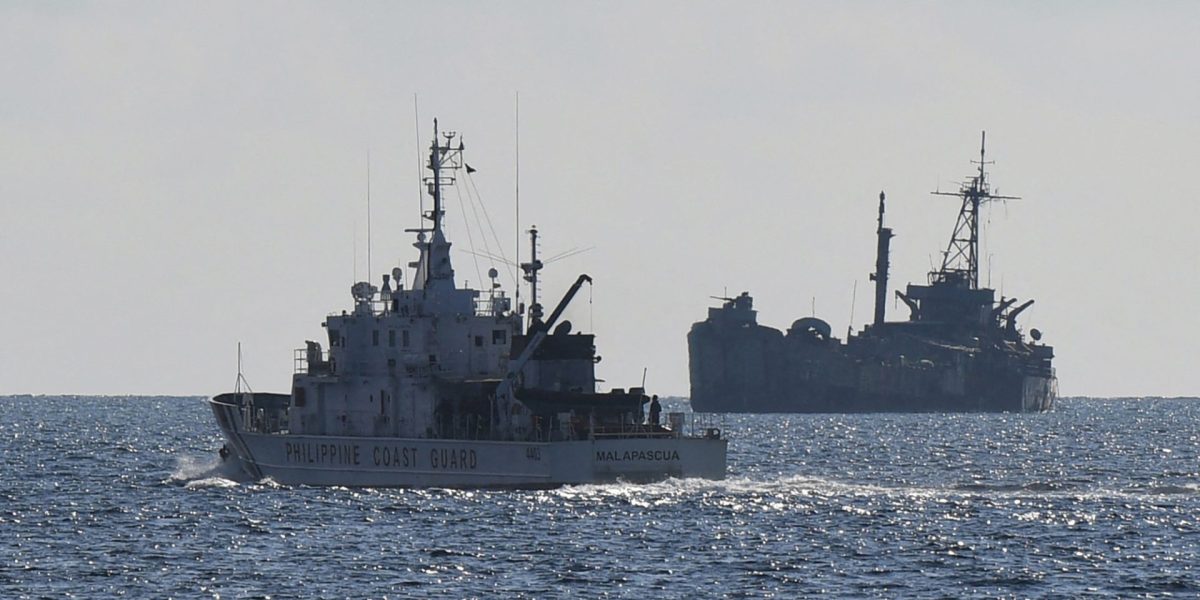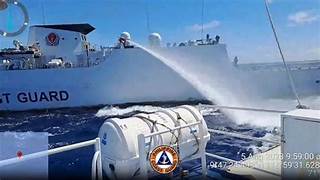President Ferdinand Marcos Jr. said Manila issued a message of protest, including photographs, after a Chinese coast guard deployed water cannons against a Filipino supply boat in the South China Sea.
The Chinese coast guard used water cannons against Philippine naval vessels during a confrontation in the disputed South China Sea, and the Philippine government summoned China’s ambassador to express its severe diplomatic displeasure.
According to Teresita Daza, a spokesperson for the Department of Foreign Affairs, Huang Xilian, the Chinese ambassador to Manila, was called and given a diplomatic complaint by Theresa Lazaro, an undersecretary of the Philippine government.
Manila accused the Chinese coast guard on Saturday with stopping a Filipino supply boat bringing food, water, fuel, and extra army personnel by using “excessive and offensive” water cannons.
The dramatic hours-long confrontation took place Saturday close to Second Thomas Shoal, which is also claimed by China but has been occupied for decades by Philippine forces stationed on a decaying, grounded navy ship. This was the most recent flare-up in the long-running South China Sea territorial disputes involving China, the Philippines, Vietnam, Malaysia, Taiwan, and Brunei.

Australia, the US, Britain, the EU, and other nations have all denounced China’s move. Washington repeated its warning that it is obligated to defend its staunch treaty friend in the event that Philippine public vessels and forces come under armed attack, including in the South China Sea. Chinese officials claimed they were taking “necessary controls” against Philippine boats that had “illegally” entered their territorial seas.
The Filipino boat involved in the incident was transporting supplies and a fresh group of troops to the Philippine-occupied Second Thomas Shoal, which is located more than 1,000 kilometres from China’s nearest large landmass, Hainan Island, and approximately 200 kilometres from the Philippine Island of Palawan.
In a news conference on Monday, Philippine coast guard and diplomatic authorities displayed videos and images they claimed showed two civilian boats used by the Philippine navy being blocked by six Chinese coast guard ships and two military vessels.
The Philippine military claims that the Chinese coast guard fired a heavy water cannon at a supply boat. Only one of the two Philippine boats, according to the authorities, was able to provide food, water, fuel, and other supplies to the Philippine Marines deployed on the shoal.
The Chinese coast guard ships also stopped two Philippine coast guard ships that were accompanying the supply boats from a distance and threatened them with water cannons during the conflict. At one point, three Chinese navy ships waited nearby at a close range, according to Commodore Jay Tarriela of the Philippine Coast Guard.
China was ordered to stop interfering with Philippine legal activities, stop targeting Philippine ships in the South China Sea, and abide by international law, including the 1982 U.N. Convention on the Law of the Seas.
Beijing’s coast guard stated that its ships had fired water cannons at Philippine ships that had, according to Beijing, strayed into the shoal known as Ren’ai Jiao without permission. It claimed that the Philippines broke its agreement to remove the stranded warship off the shoal.

China has long asked that the Philippines remove its naval personnel and confine the still-in-service but decaying BRP Sierra Madre to its territory. The ship, which was purposefully stranded on the shoal in 1999, now stands as a frail representation of Manila’s claim to the atoll.
China claims sovereignty of nearly the entire South China Sea, despite an international judgement in 2016 by an arbitration tribunal established under the United Nations Convention on the Law of the Sea that invalidated its claims. China refuses and continues to ignore that verdict.












